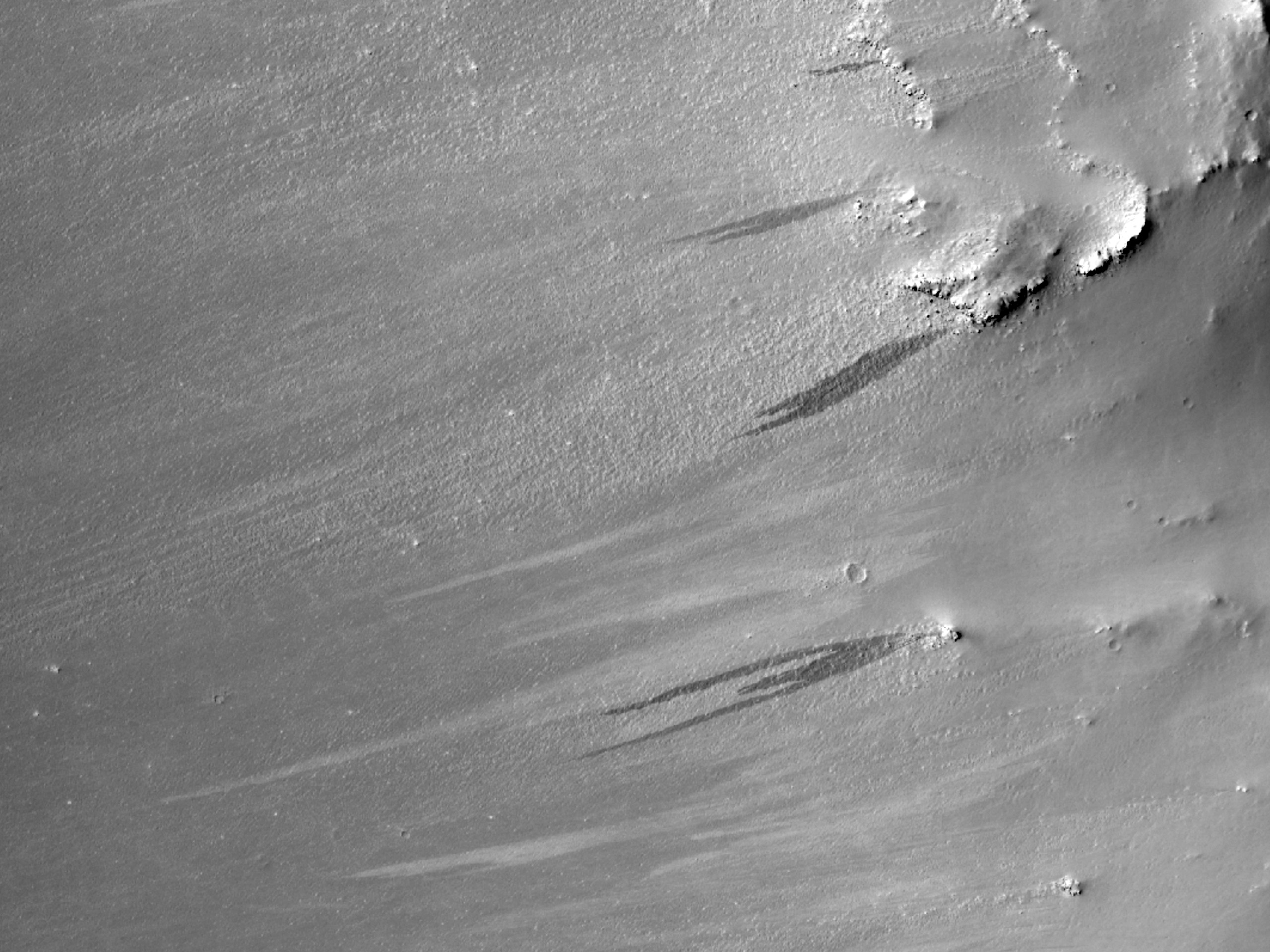This observation shows the rim of a crater in the region of Terra Sabaea in the Northern Hemisphere of Mars.
The
cutout is a close-up view of the crater rim revealing dark and light-toned slope streaks. Slope streak formation is among the few known processes currently active on Mars. While their mechanism of formation and triggering is debated, they are most commonly believed to form by downslope movement of extremely dry sand or very fine-grained dust in an almost fluidlike manner (analogous to a terrestrial snow avalanche) exposing darker underlying material.
Other ideas include the triggering of slope streak formation by possible concentrations of near-surface ice or scouring of the surface by running water from aquifers intercepting slope faces, spring discharge (perhaps brines), and/or hydrothermal activity.
Several of the slope streaks in this cutout, particularly the three longest darker streaks, show evidence that downslope movement is being diverted around obstacles such as large boulders. Several streaks also appear to originate at boulders or clumps of rocky material.
In general, the slope streaks do not have large deposits of displaced material at their downslope ends and do not run out onto the crater floor suggesting that they have little reserve kinetic energy. The darkest slope streaks are youngest and can be seen to cross cut and superpose older and lighter-toned streaks. The lighter-toned streaks are believed to be dark streaks that have lightened with time as new dust is deposited on their surface.
ID:
PSP_001808_1875date: 15 December 2006
altitude: 271 km
https://uahirise.org/hipod/PSP_001808_1875
NASA/JPL-Caltech/University of Arizona
#Mars #science #NASA
